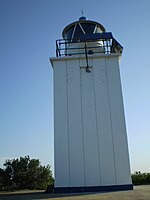Kamay Botany Bay National Park

The Kamay Botany Bay National Park is a heritage-listed protected national park that is located in the eastern part of Botany Bay in Sydney, New South Wales, Australia. The 456-hectare (1,130-acre) national park is situated approximately 16 kilometres (9.9 mi) south-east of the Sydney central business district, on the northern and southern headlands of Botany Bay. The northern headland is at La Perouse and the southern headland is at Kurnell. The visitor attraction, natural conservation and heritage conservation area at Cape Solander Drive is also known as Kamay Botany Bay National Park (North and South) and Towra Point Nature Reserve, La Perouse Monument, Tomb of Père (Fr.) Receveur, Macquarie Watchtower and Cable Station. The property is owned by NSW Office of Environment and Heritage and managed by the NSW National Parks & Wildlife Service, both agencies of the Government of New South Wales. Kamay Botany Bay was added to the New South Wales State Heritage Register on 29 November 2013, and was added to the Australian National Heritage List on 10 September 2017. It is also included in a UNESCO World Heritage serial nomination 'The Rise of Systemic Biology'. The area is recognised for its outstanding cultural and historic heritage values to Australia. It is a place where botanist Sir Joseph Banks and naturalist Dr Daniel Solander collected plant specimens in 1770 as part of the first landing of the Endeavour in Australia. Banks and Solander collected many iconic Australian plant species, including some type specimens; these have important scientific and research value. The national park is also the site where Captain James Cook first set foot on Australian soil in 1770, marking the beginning of Britain's interest in Australia.
Excerpt from the Wikipedia article Kamay Botany Bay National Park (License: CC BY-SA 3.0, Authors, Images).Kamay Botany Bay National Park
Abbe Receveur Place, Sydney Little Bay
Geographical coordinates (GPS) Address External links Nearby Places Show on map
Geographical coordinates (GPS)
| Latitude | Longitude |
|---|---|
| N -34.020555555556 ° | E 151.22472222222 ° |
Address
Kamay Botany Bay National Park (Botany Bay National Park)
Abbe Receveur Place
2036 Sydney, Little Bay
New South Wales, Australia
Open on Google Maps








